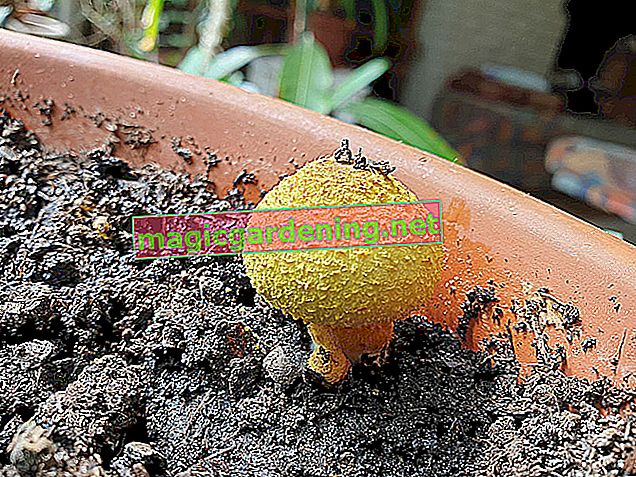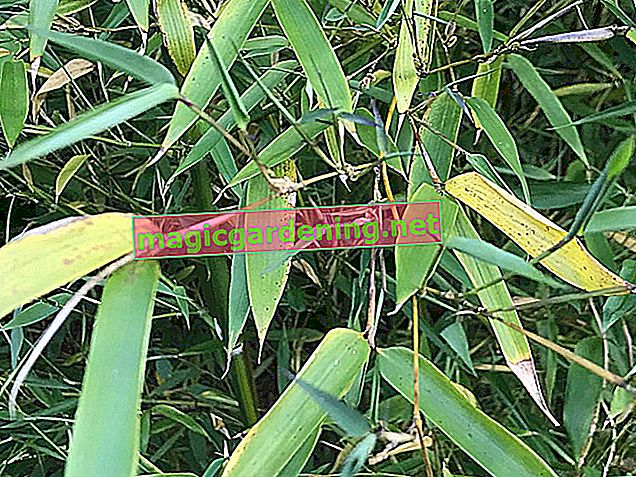
Good care is based on careful preparation
While the cultivation of tomato plants in the house is in full swing in March / April, knowledgeable hobby gardeners prepare the soil in the greenhouse. When the young plants move into the protected atmosphere of the greenhouse in May, they should find nutrient-rich, loose soil. Incidentally, the tomatoes do not mind if there were conspecifics in culture there - on the contrary.
- loosen the soil deeply and weed it thoroughly
- Incorporate half-rotted compost at a dosage of 3 liters per square meter
- In addition, enrich the soil with horn shavings, rock or algae flour and potash magnesia (€ 6.39 at Amazon *)
- Just before planting, shower the bed with horsetail broth to prevent fungal infections
also read
- Tomatoes and cucumbers in the same greenhouse - can that go well?
- Anyone can build a tomato greenhouse - this is how it works
- These factors influence successful potato cultivation
Since meticulous cleanliness is of great importance in tomato care, all tools and climbing aids are disinfected.
Proper planting makes tomato care easier
If tomato plants leave their nursery, they should be at least 20 to 25 centimeters tall and have 2-3 flowers. Place each plant about 6 centimeters lower than in the nursery pot. A little nettle herb added to the planting hole improves the starting conditions. A distance of 60 centimeters is ideal for easily reaching every plant during tomato care.
Just don't rain
Watering tomatoes is a bit tricky given the threat of plant disease. Since damp leaves immediately cause fungal spores, irrigation from above is a deadly sin in tomato care. Clever hobby gardeners have developed much more efficient ways of watering their tomatoes in the greenhouse. Thats how it works:
- always pour with tempered rainwater
- alternatively use stale tap water
- always water directly at the roots
- Never let the soil dry out or soak it completely
- sudden excess water causes tomato peel to burst
Resourceful hobby gardeners dig a flower pot next to the plant so that no water splashes from the ground on the leaves. This is filled with water and supplies the soil with the necessary moisture. In addition, it is advisable to remove the leaves from a suitable height to a height of 40 centimeters. The result is improved air circulation and a lower risk of splashing water.
Balanced nutrient supply - this is how you avoid over-fertilization
Although tomato plants are assigned to the heavy eaters, this does not necessarily mean a constant application of fertilizer at a high level. So that they do not go wild, the focus is on a reduced nitrogen supply in favor of potassium, calcium, phosphorus, magnesium and lime. Organic fertilizer should be given preference in this regard.
- Fertilize very sparingly with compost until the beginning of flowering
- Work in compost every 2 weeks at the same time as the blossoms begin around July
- In addition, fertilize with nettle manure, comfrey manure, guano, (10.44 € at Amazon *) horn shavings and rock flour (14.95 € at Amazon *)
Since mulching plays an important role in tomato care, it should also be used in the greenhouse. A thick layer of comfrey leaves, straw and stripped tomato shoots is recommended. If the tomatoes still let their leaves hang down or they turn pale yellow, you shouldn't be afraid to use a commercially available liquid tomato fertilizer.
Tomatoes in the greenhouse - that's how it works
Consistent pruning is an indispensable part of tomato care in the greenhouse. In order to be able to optimally utilize the limited space, stake tomatoes are sensible for the greenhouse. The plants climb up on strings or climbing aids. Meanwhile, they constantly strive to branch out into breadth. Side shoots develop, which cost the plant a lot of strength.
For the tomato plant to invest its energy in large, juicy fruits, the stingy shoots have to give way. This measure begins in the first week after moving to the greenhouse and continues until after the harvest. How to do it:
- it is advisable to wear disposable gloves
- grab the unwanted shoot in the axilla with your fingers and snap it off
- From a height of 15 centimeters break out with your hand
No confusion
Even inexperienced hobby gardeners are not embarrassed if they accidentally remove a fruiting instinct instead of a stinginess instinct. The visual appearance has the following, unmistakable features:
- a stingy instinct grows precisely in the leaf axil, where the petiole branches off from the stem
- a fruiting shoot arises directly from the trunk, directed straight ahead
Tips & Tricks
Since tomato plants are defoliated up to 40 cm in height to prevent late blight and brown rot, the soil in the greenhouse looks quite barren. Underplanting marigolds and marigolds not only makes for a pretty appearance, but also has a protective effect on pests and nematodes.








